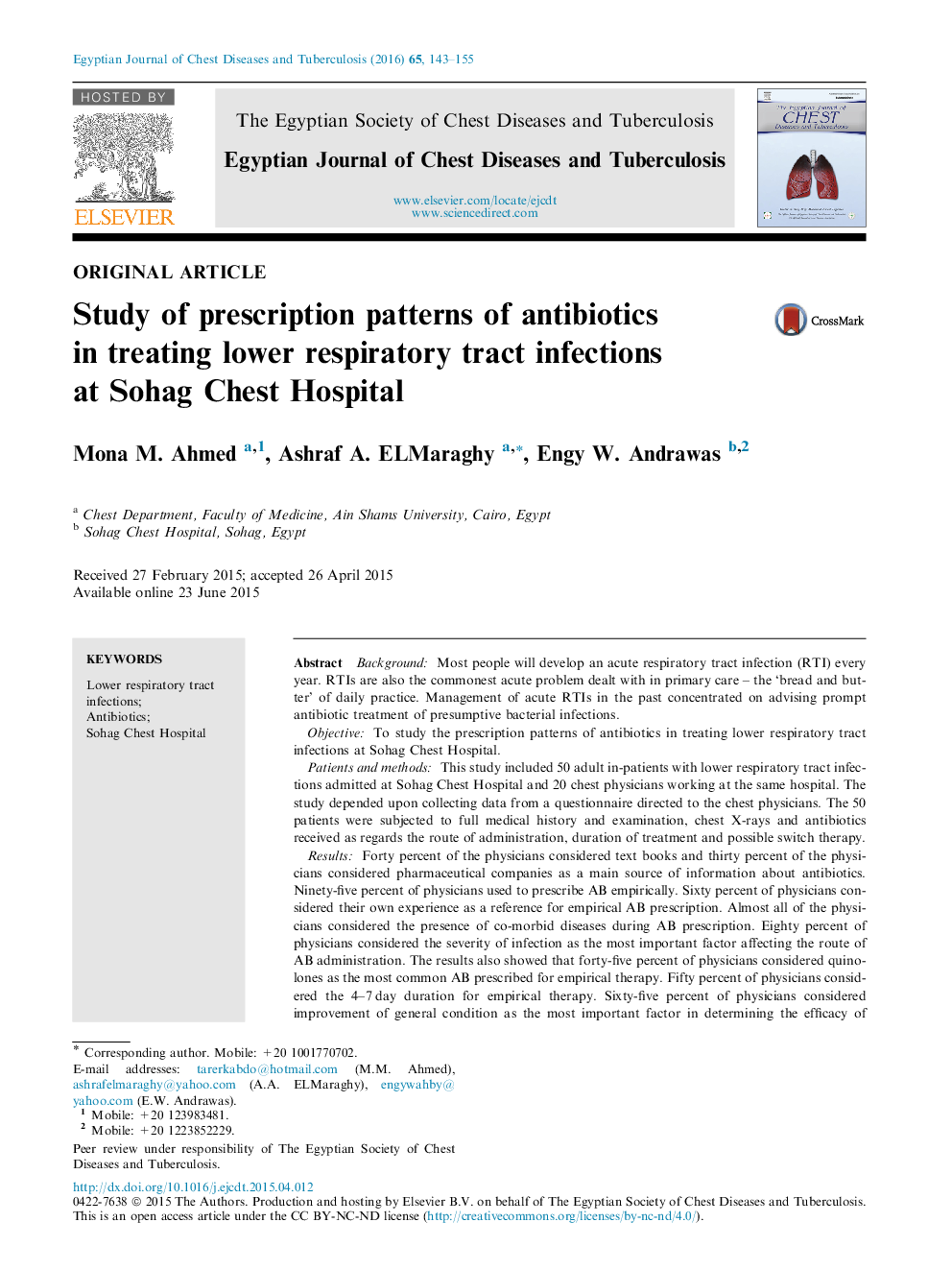| Article ID | Journal | Published Year | Pages | File Type |
|---|---|---|---|---|
| 3399896 | Egyptian Journal of Chest Diseases and Tuberculosis | 2016 | 13 Pages |
BackgroundMost people will develop an acute respiratory tract infection (RTI) every year. RTIs are also the commonest acute problem dealt with in primary care – the ‘bread and butter’ of daily practice. Management of acute RTIs in the past concentrated on advising prompt antibiotic treatment of presumptive bacterial infections.ObjectiveTo study the prescription patterns of antibiotics in treating lower respiratory tract infections at Sohag Chest Hospital.Patients and methodsThis study included 50 adult in-patients with lower respiratory tract infections admitted at Sohag Chest Hospital and 20 chest physicians working at the same hospital. The study depended upon collecting data from a questionnaire directed to the chest physicians. The 50 patients were subjected to full medical history and examination, chest X-rays and antibiotics received as regards the route of administration, duration of treatment and possible switch therapy.ResultsForty percent of the physicians considered text books and thirty percent of the physicians considered pharmaceutical companies as a main source of information about antibiotics. Ninety-five percent of physicians used to prescribe AB empirically. Sixty percent of physicians considered their own experience as a reference for empirical AB prescription. Almost all of the physicians considered the presence of co-morbid diseases during AB prescription. Eighty percent of physicians considered the severity of infection as the most important factor affecting the route of AB administration. The results also showed that forty-five percent of physicians considered quinolones as the most common AB prescribed for empirical therapy. Fifty percent of physicians considered the 4–7 day duration for empirical therapy. Sixty-five percent of physicians considered improvement of general condition as the most important factor in determining the efficacy of AB prescribed. Forty percent of physicians considered 2–3 day duration was enough to assess the efficacy of AB prescribed. Fifty percent of physicians included in the study changed the AB group in case the prescribed AB was ineffective. The study showed that a majority of physicians used to make sure that the prescribed AB was the one actually given to the patient. Most of the physicians used to ask the patient before prescribing the AB if he was sensitive to a certain AB. Seventy-five percent of physicians used to ask the patient about AB history in the last 3 months. As regards fifty percent of physicians, their AB prescription decision might be sometimes affected by the patient.ConclusionsAB prescription practices need to be well evaluated in order to formulate an acceptable rationale aiming at improving the global situation of antibiotic use. Many points have to be taken into consideration such as increasing awareness of physicians about different widely accepted guidelines.
